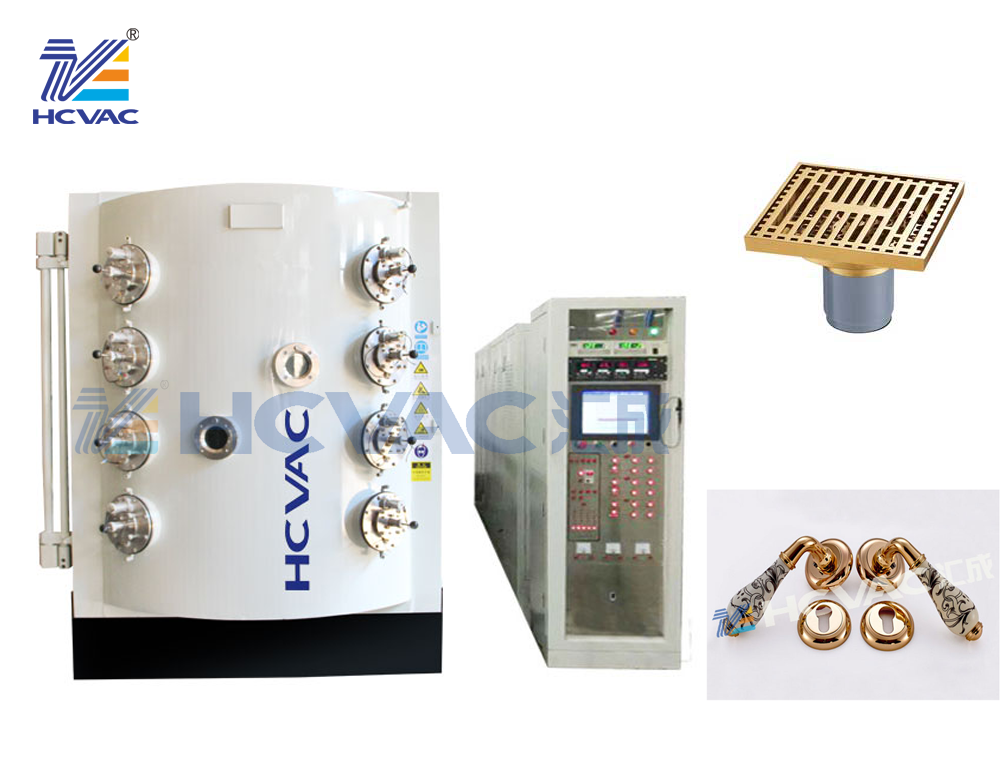


News centres
In the vacuum industry, many workpieces have strict requirements on surface quality, so magnetron sputtering vacuum coating machine is used for coating. The magnetron sputtering coating technology has the advantages of delicate structure, good film uniformity, strong adhesion and so on. However, different magnetron sputtering methods are used for different materials, and magnetron sputtering is also divided into balanced magnetron sputtering and unbalanced magnetron sputtering. Here, we will introduce these two coating methods to you:

Balanced magnetron sputtering of vacuum coating machine, that is, traditional magnetron sputtering, is to place a permanent magnet or electromagnetic coil whose core is equal to or similar to the magnetic field intensity of the outer ring behind the cathode target to form a magnetic field perpendicular to the electric field direction on the surface of the target. The deposition chamber is filled with a certain amount of working gas, usually Ar. Under the action of high pressure, Ar is ionized into Ar+ ions and electrons, resulting in glow discharge. Ar+ ions bombard the target with electric field acceleration, sputtering target atoms, ions and secondary electrons.
Under the action of mutually perpendicular electromagnetic fields, electrons move in a cycloidal manner and are bound to the surface of the target, which prolongs their trajectory in the plasma, increases their participation in the collision and ionization process of gas molecules, ionizes more ions, improves the ionization rate of the gas, and can maintain discharge at lower gas pressure, so magnetron sputtering not only reduces the gas pressure in the sputtering process, but also improves the sputtering efficiency and deposition rate.
However, balanced magnetron sputtering also has shortcomings. For example, due to the magnetic field, the electrons generated by glow discharge and the sputtered secondary electrons are tightly confined near the target surface by the parallel magnetic field, and the plasma area is strongly confined in the area about 60 mm from the target surface. With the increase of the distance from the target surface, the plasma concentration decreases rapidly. At this time, the workpiece can only be placed within the range of 50 ~ 100 mm from the magnetron target surface to enhance the effect of ion bombardment. Such a short effective coating area limits the geometric size of the workpiece to be coated, which is not suitable for large workpiece or furnace load, and restricts the application of magnetron sputtering technology. In balanced magnetron sputtering, the energy of the flying target particles is low, the bonding strength of the film substrate is poor, and the low-energy deposited atoms have low mobility on the surface of the substrate, which is easy to generate porous and rough columnar films. Increasing the temperature of the plated workpiece can certainly improve the structure and performance of the film, but in many cases, the workpiece material itself can't bear the required high temperature.
The emergence of unbalanced magnetron sputtering partially overcomes the above shortcomings, leading the plasma on the cathode target surface to the range of 200~300 mm in front of the sputtering target, and immersing the substrate in the plasma, so that on the one hand, sputtered atoms and particles are deposited on the substrate surface to form a thin film, on the other hand, the plasma bombards the substrate with a certain energy, plays the role of ion beam assisted deposition, and greatly improves the quality of the film layer. Unbalanced magnetron sputtering system has two structures, one is that the magnetic field intensity in the core is higher than that in the outer ring, the magnetic lines of force are not closed, and the plasma density on the substrate surface is low, so this method is rarely used. The other is that the magnetic field intensity of the outer ring is higher than that of the core, the magnetic lines of force do not completely form a closed loop, and part of the magnetic lines of force of the outer ring extend to the surface of the substrate, so that part of secondary electrons can escape from the surface area of the target along the magnetic lines of force, and at the same time collide and ionize with neutral particles, so that the plasma is no longer completely confined to the surface area of the target, but can reach the surface of the substrate, further increasing the ion concentration in the coating area, and improving the ion current density of the substrate, which is usually more than 5 mA/cm2. In this way, the sputtering source is also an ion source that bombards the substrate surface. The substrate ion beam current density is directly proportional to the target current density, and the target current density increases, and the deposition rate increases. At the same time, the substrate ion beam current density increases, which plays a certain bombardment role on the deposited film surface.
Unbalanced magnetron sputtering ion bombardment of vacuum coating machine can clean the oxide layer and other impurities of the workpiece and activate the surface of the workpiece before coating, and at the same time form a pseudo diffusion layer on the surface of the workpiece, which is helpful to improve the bonding force between the film layer and the surface of the workpiece. In the coating process, the bombardment of charged particles with energy can achieve the purpose of film modification. For example, ion bombardment tends to peel loose and protruding particles from the film layer, cutting off the dominant growth of crystalline or condensed state of the film layer, thus producing a denser, stronger and more uniform film layer, and plating a coating with excellent performance at a lower temperature.